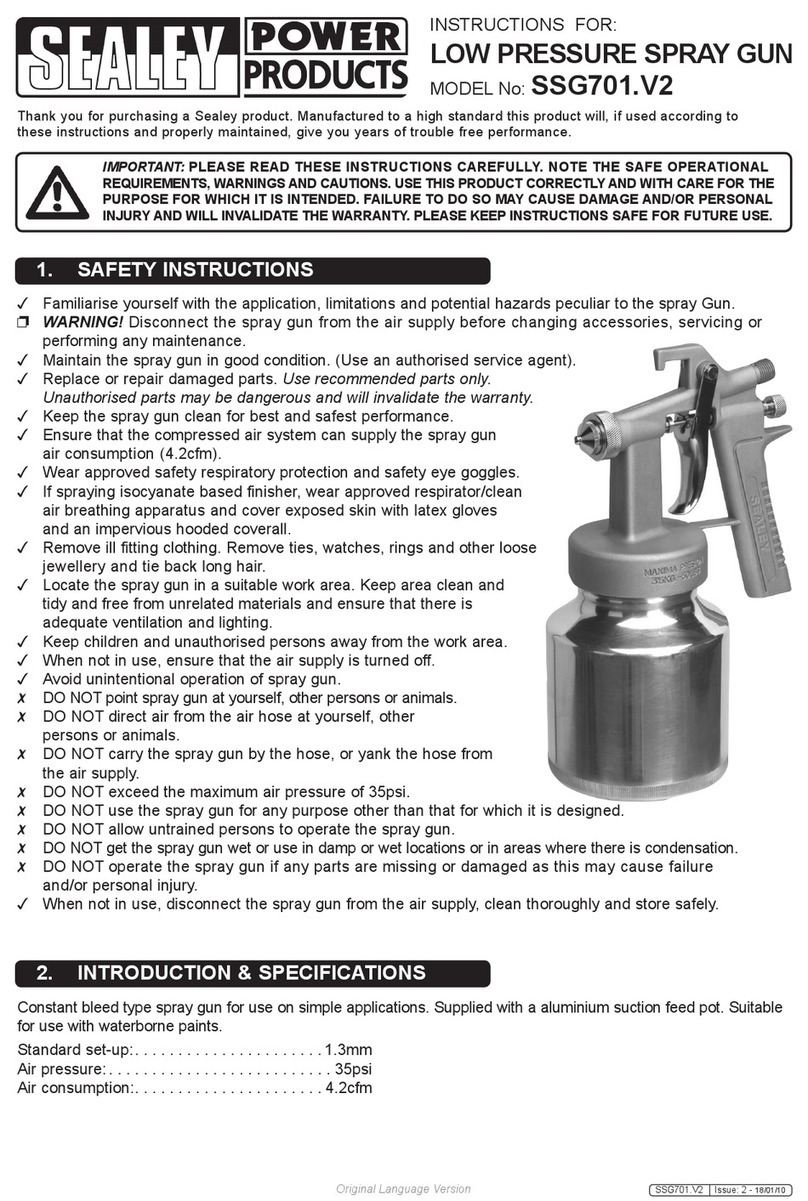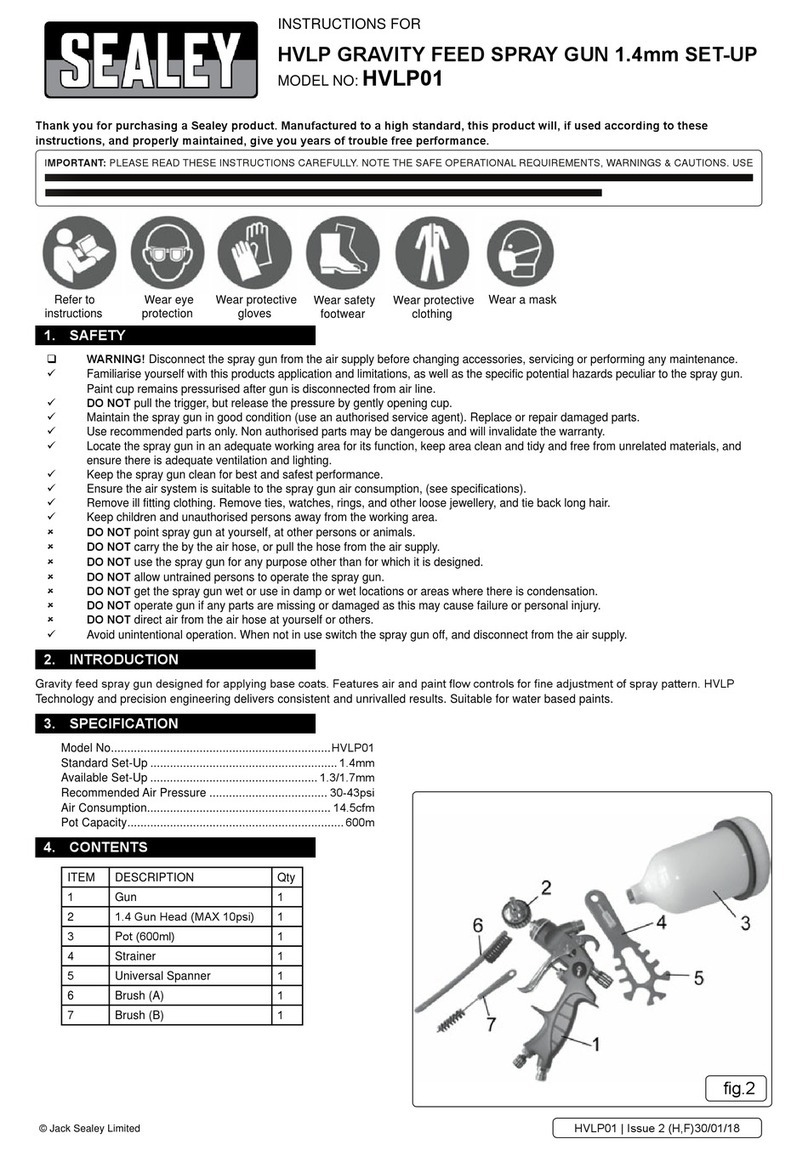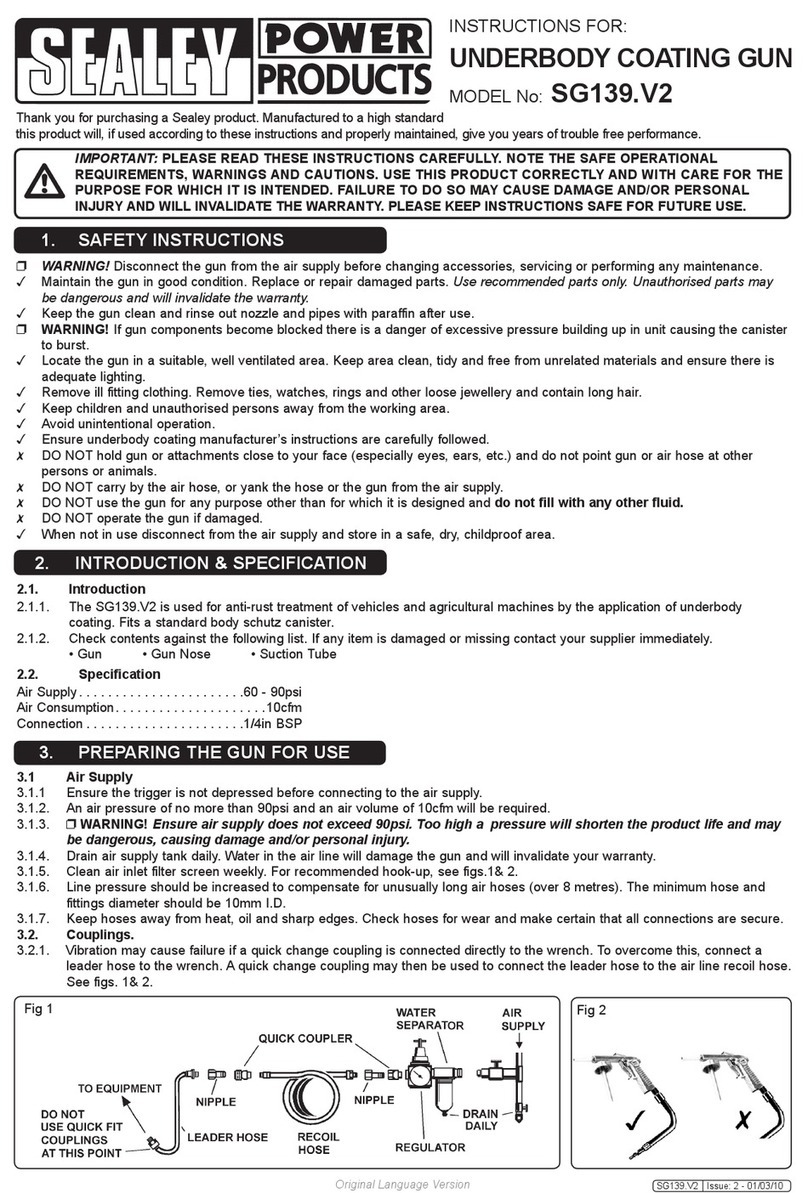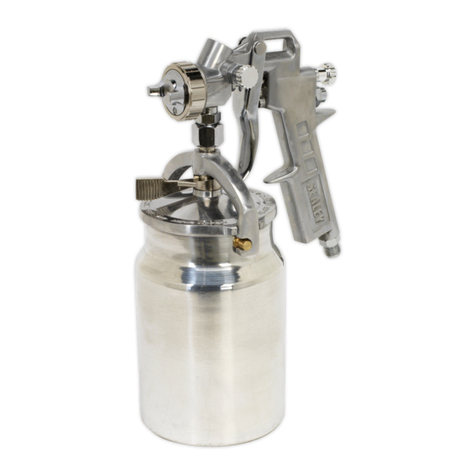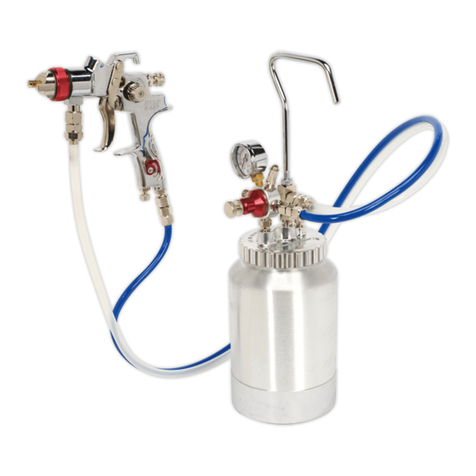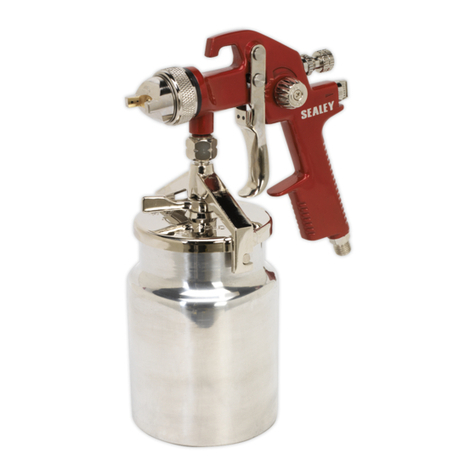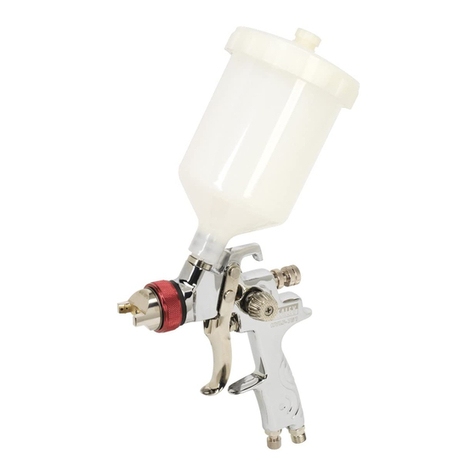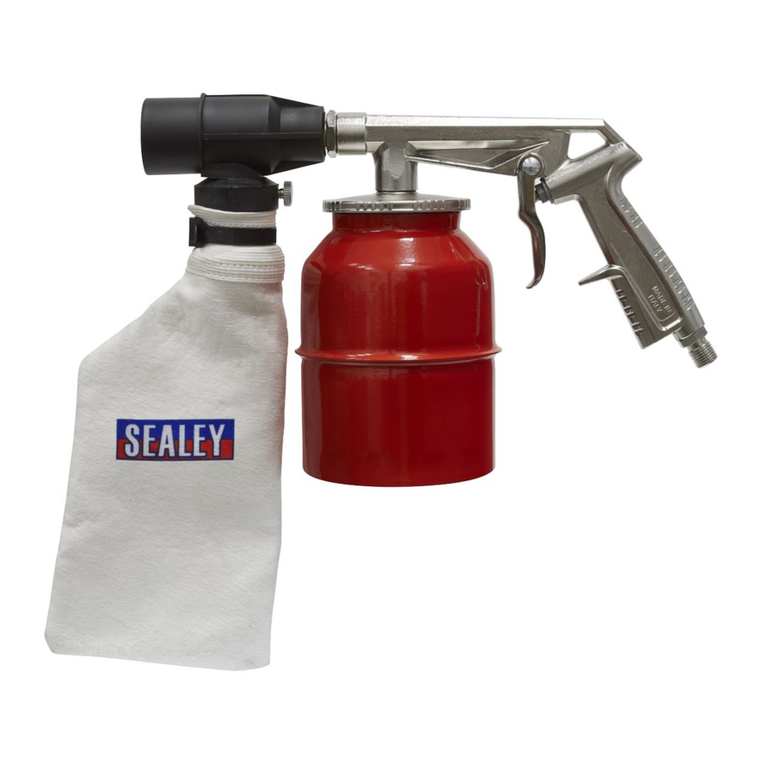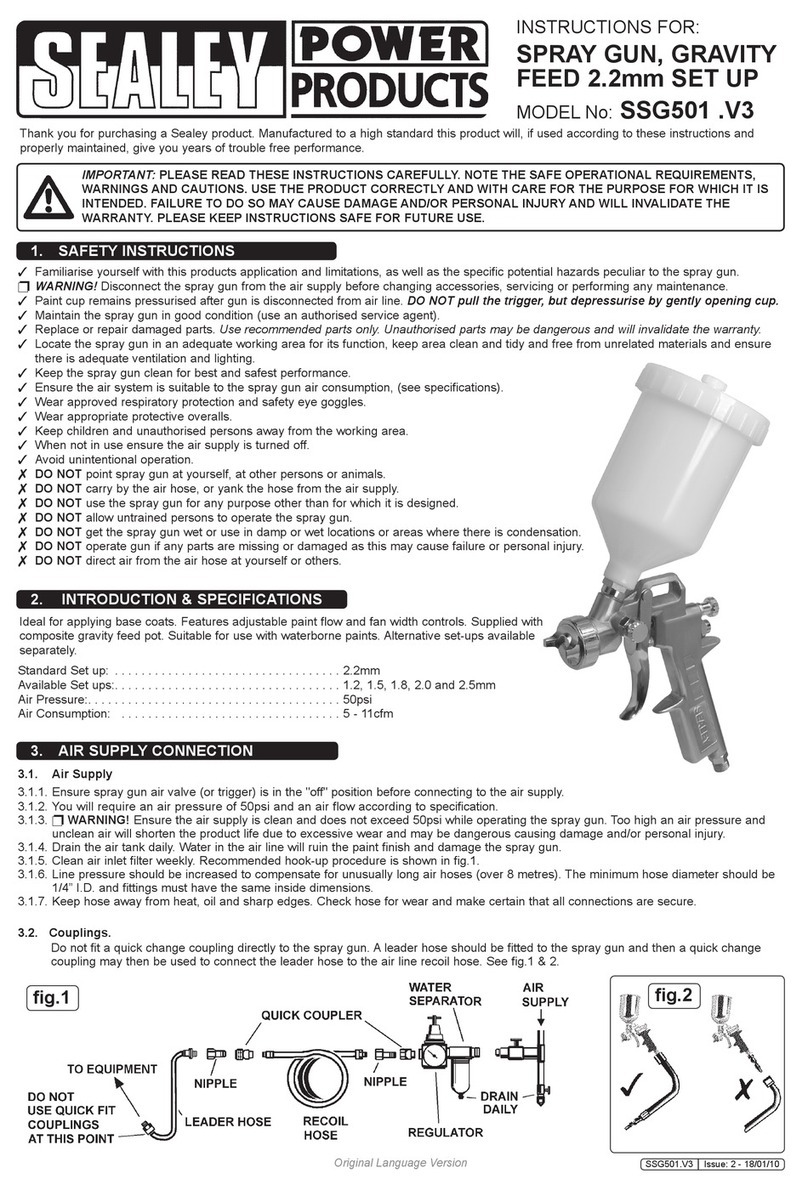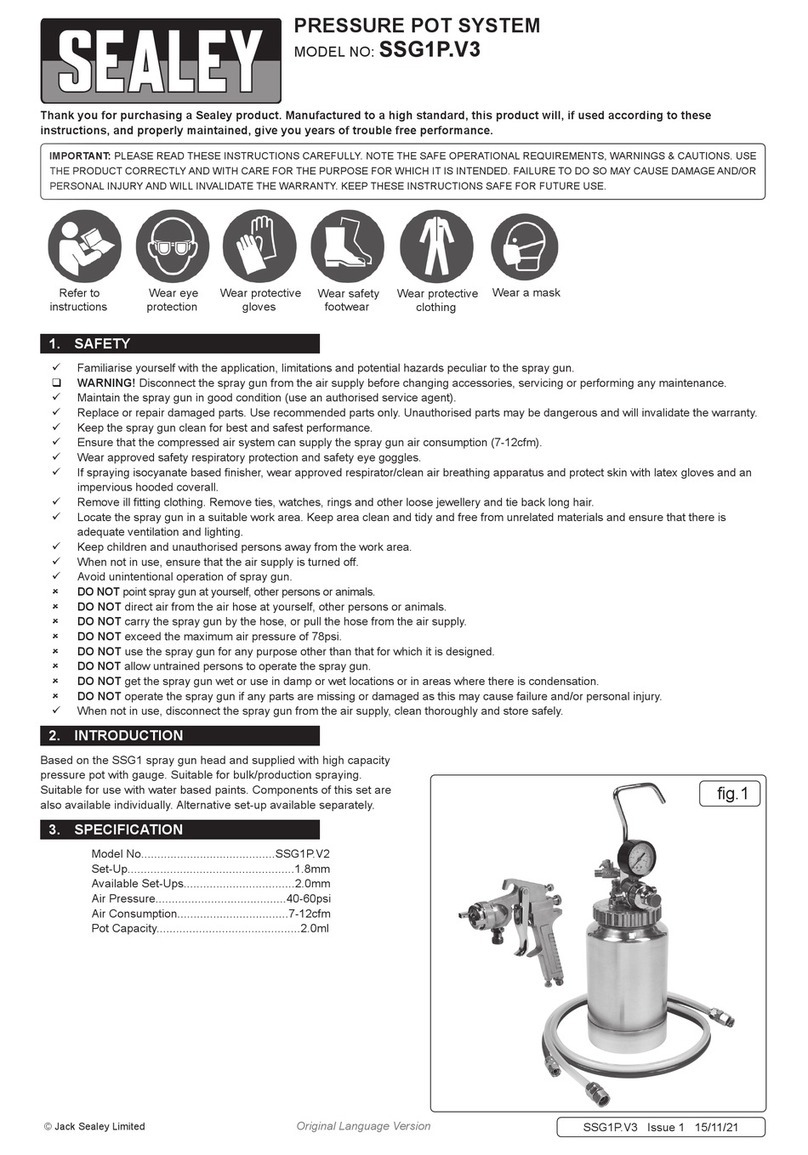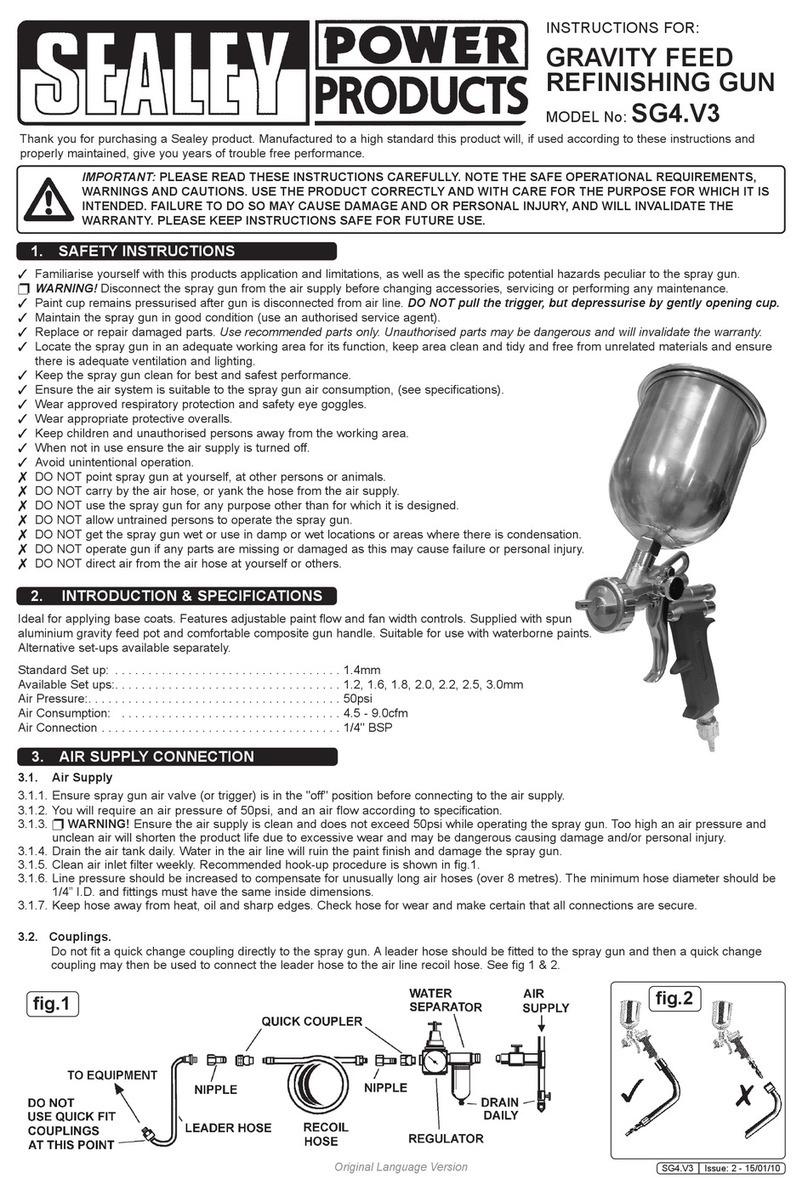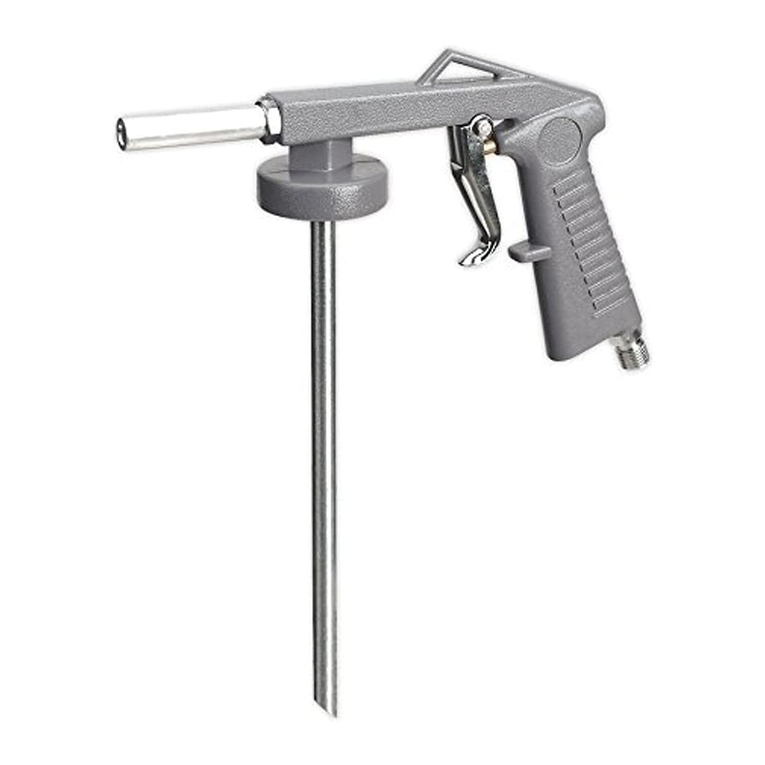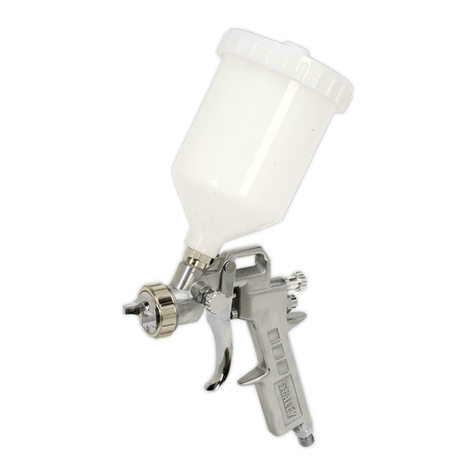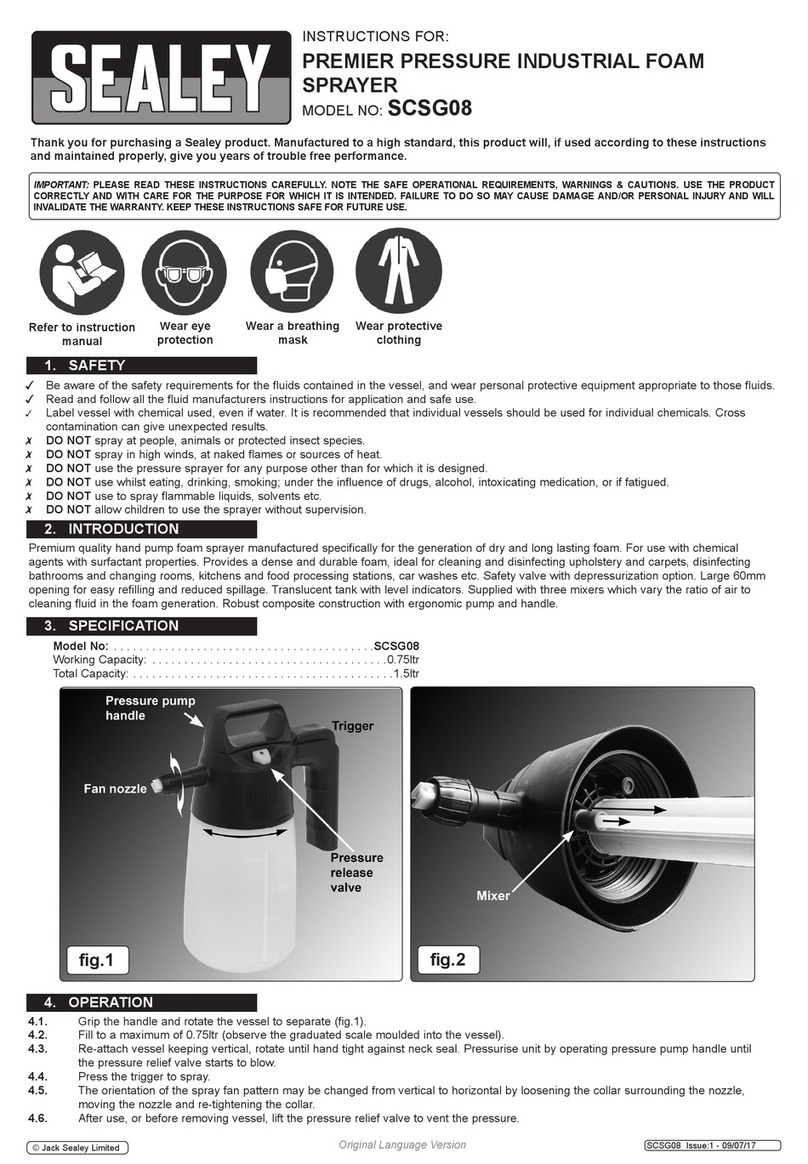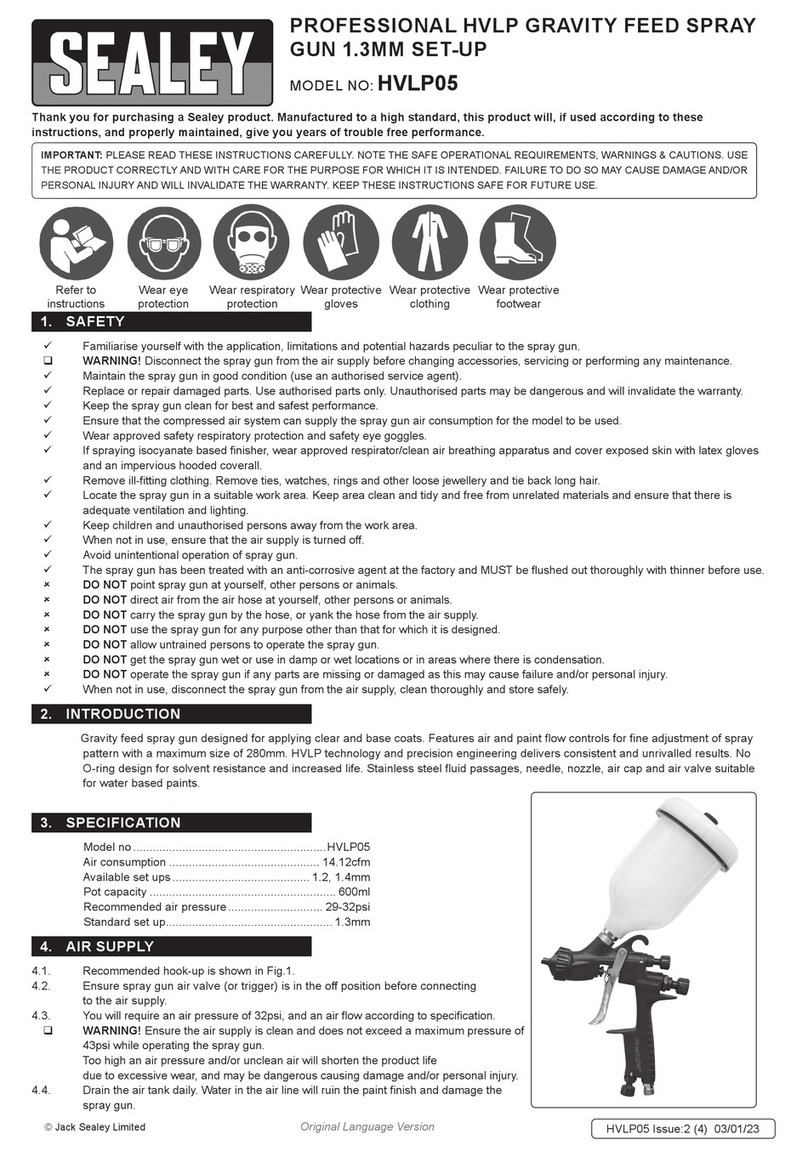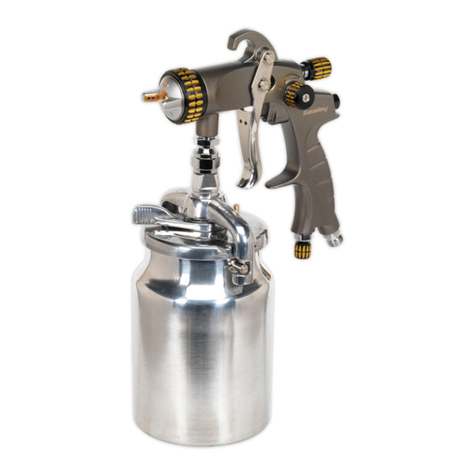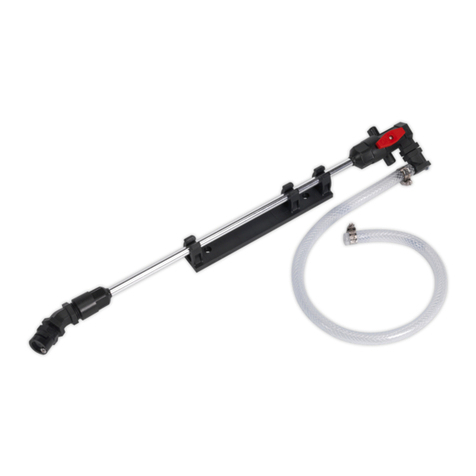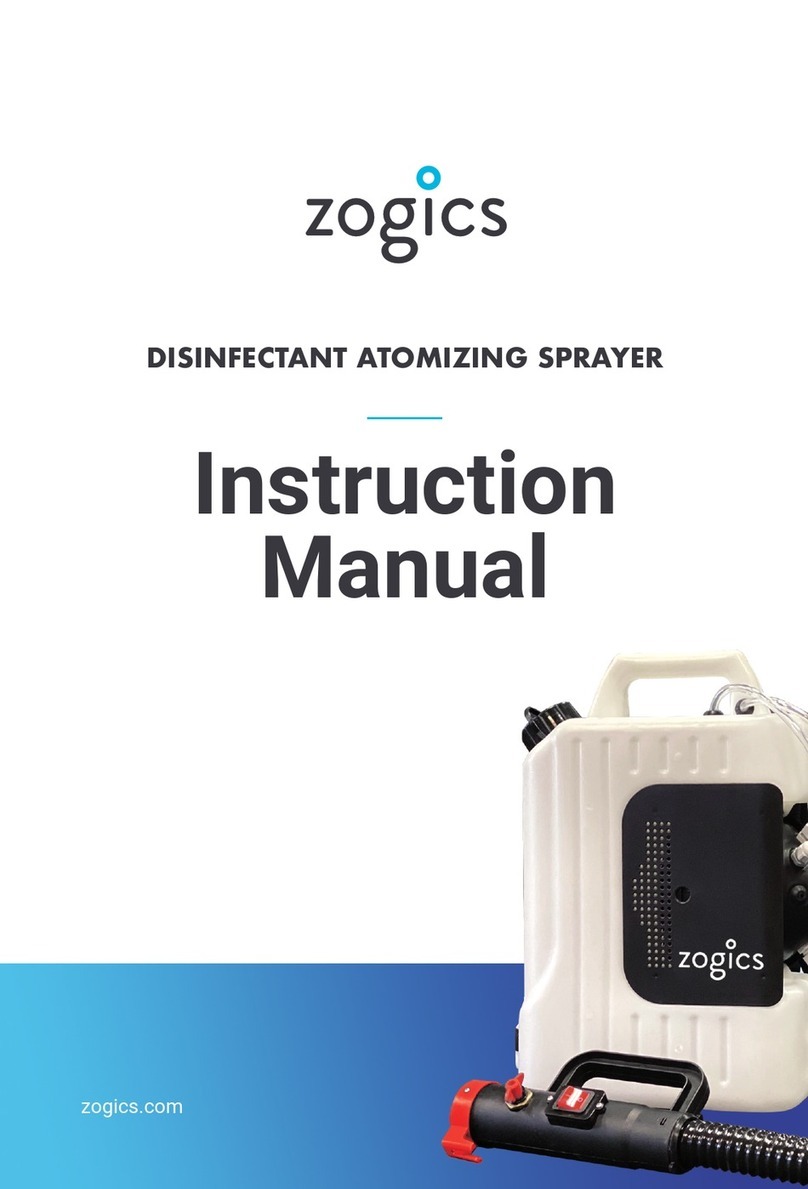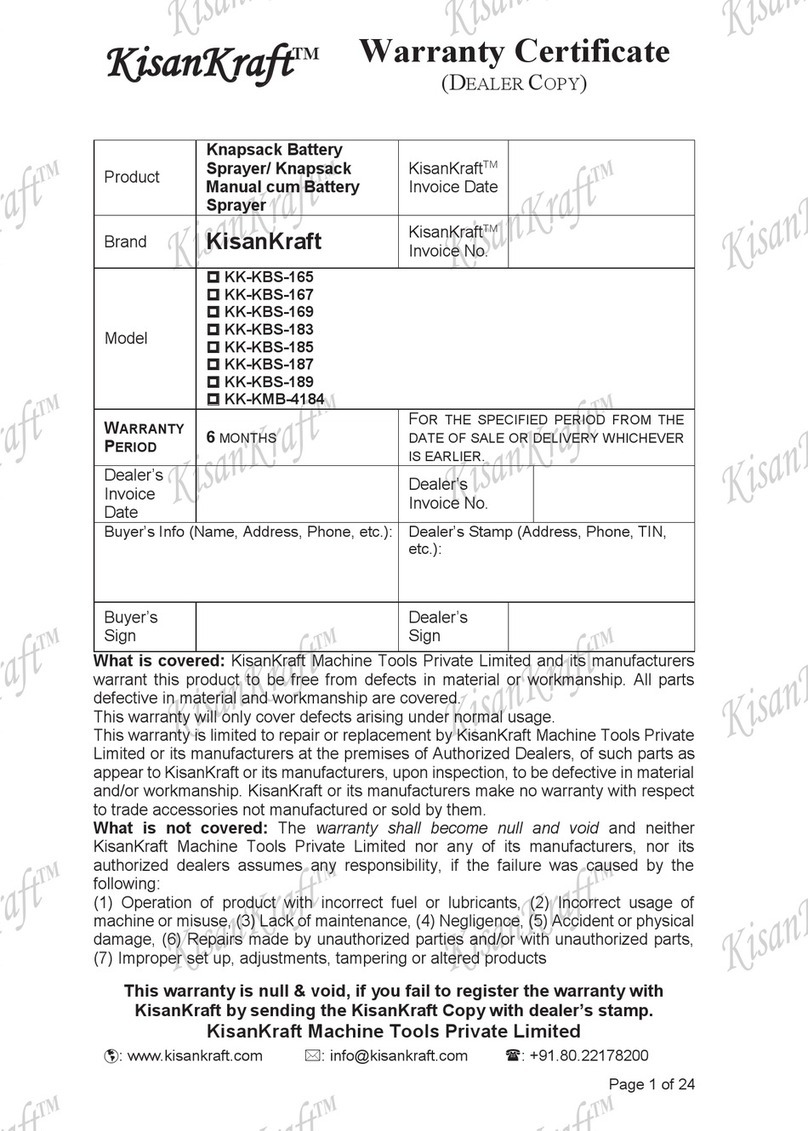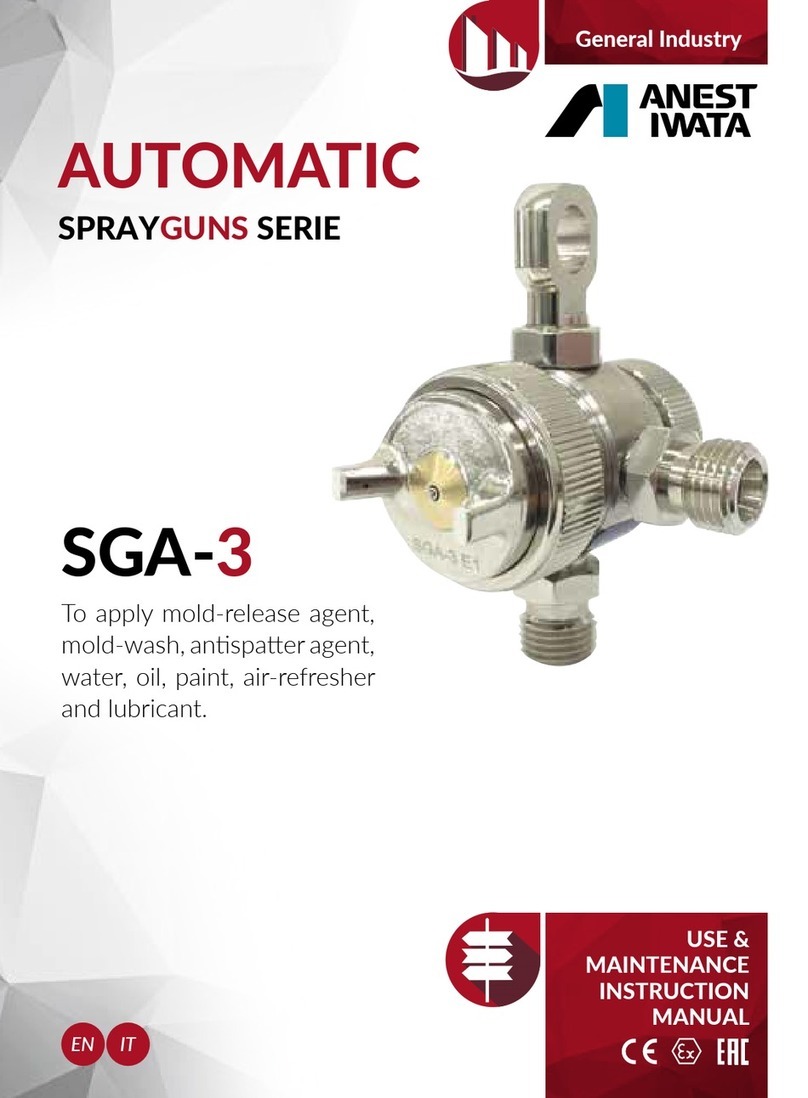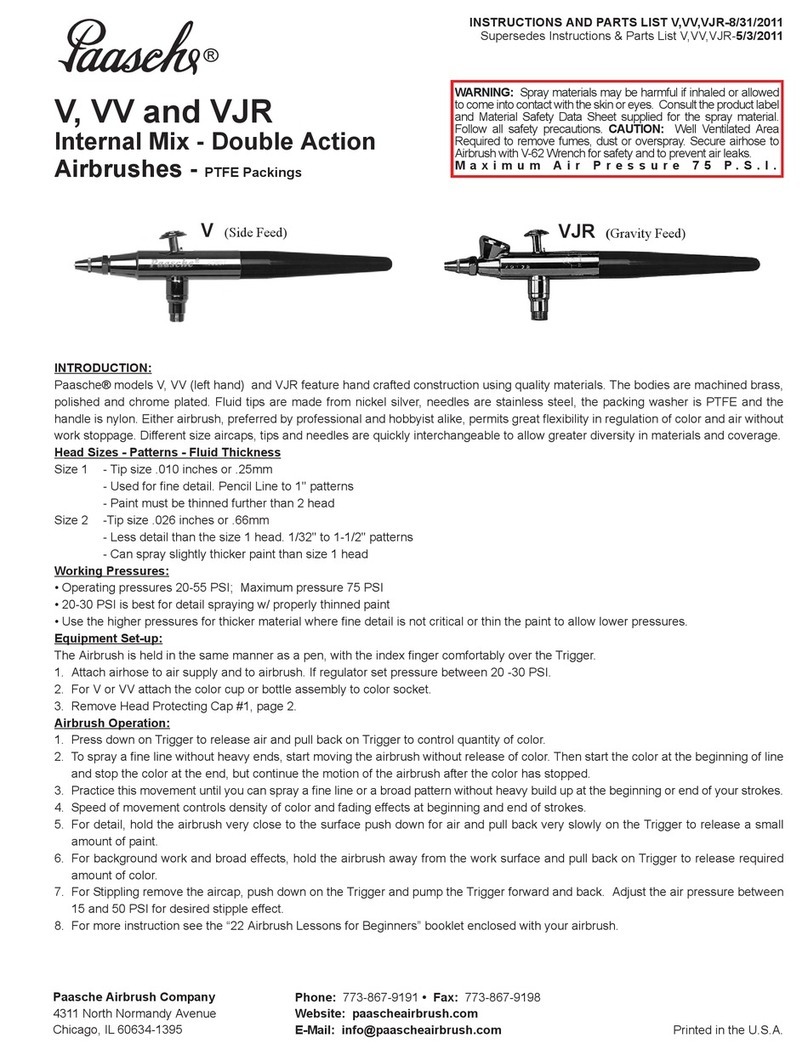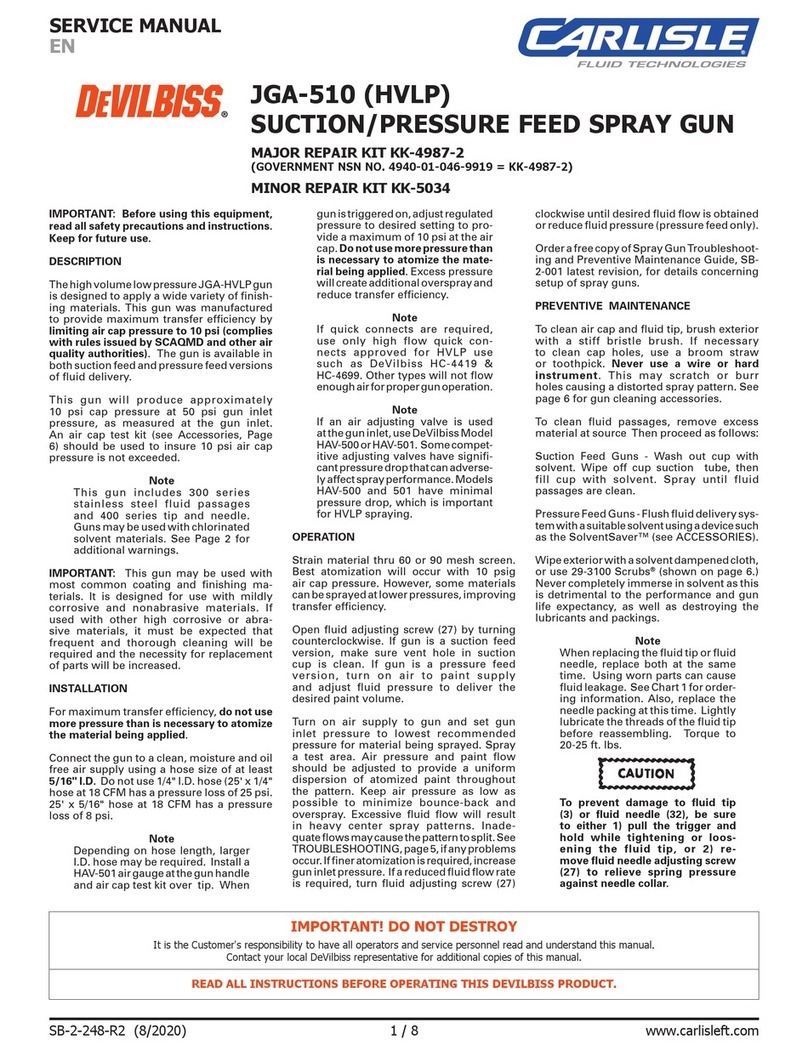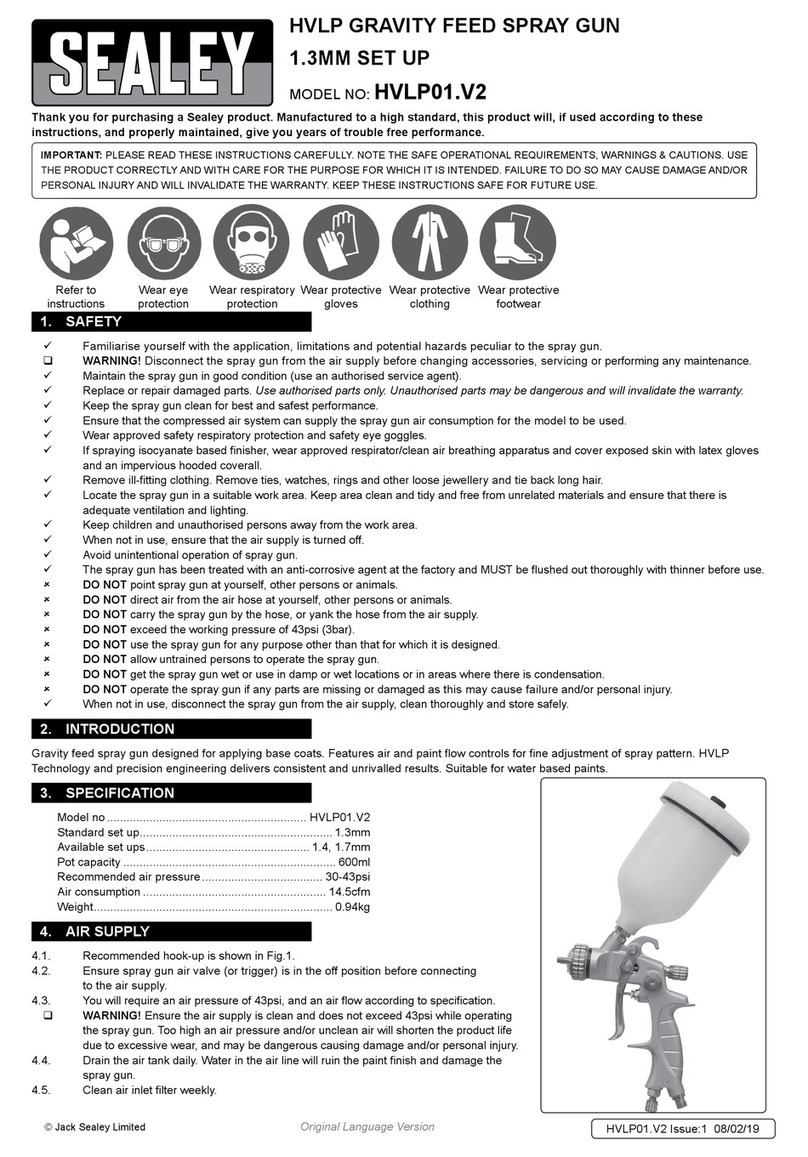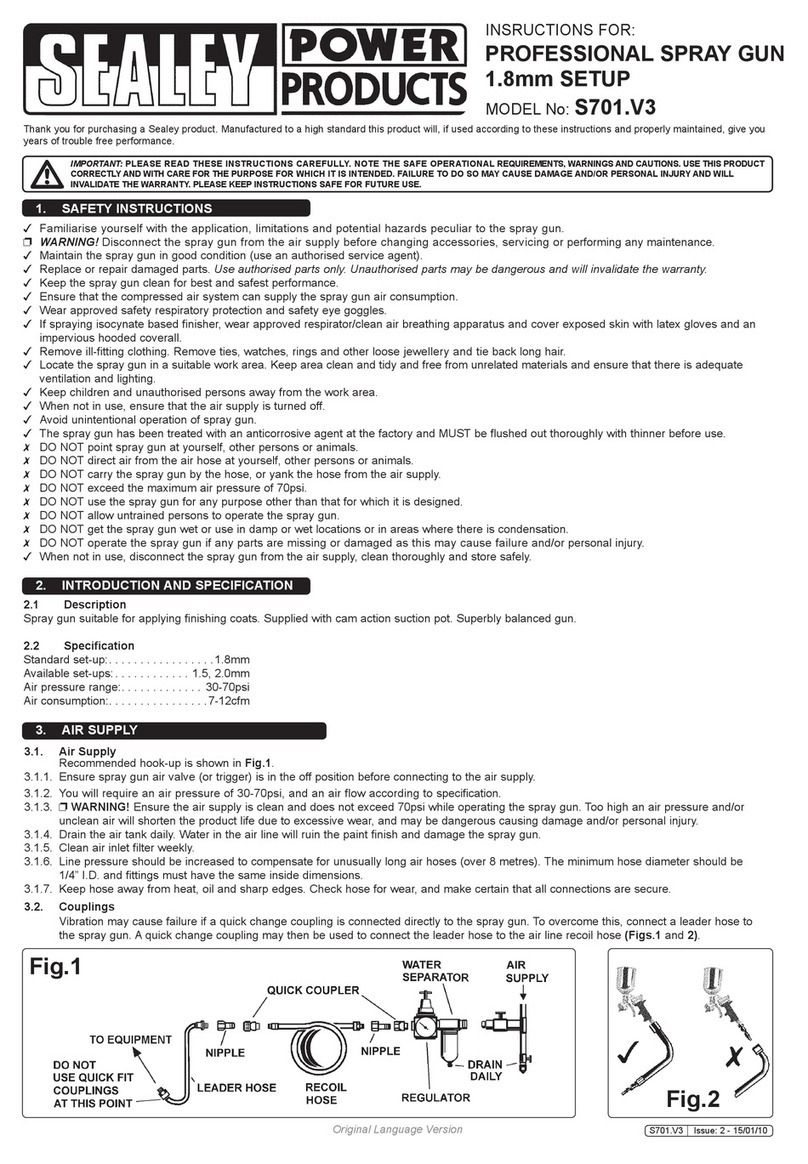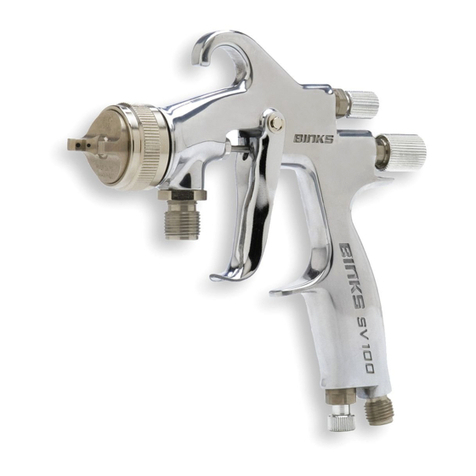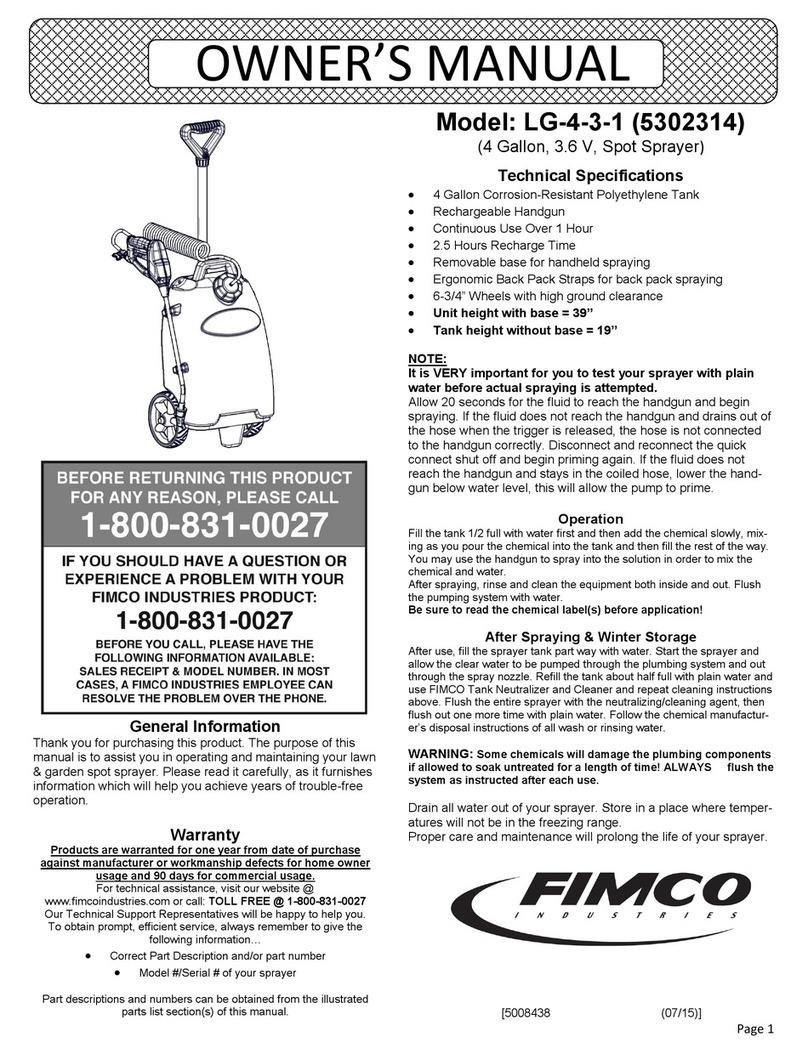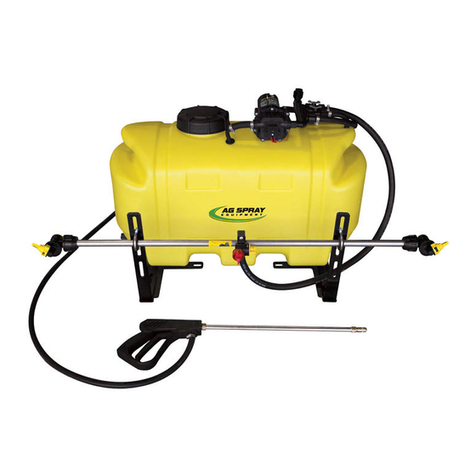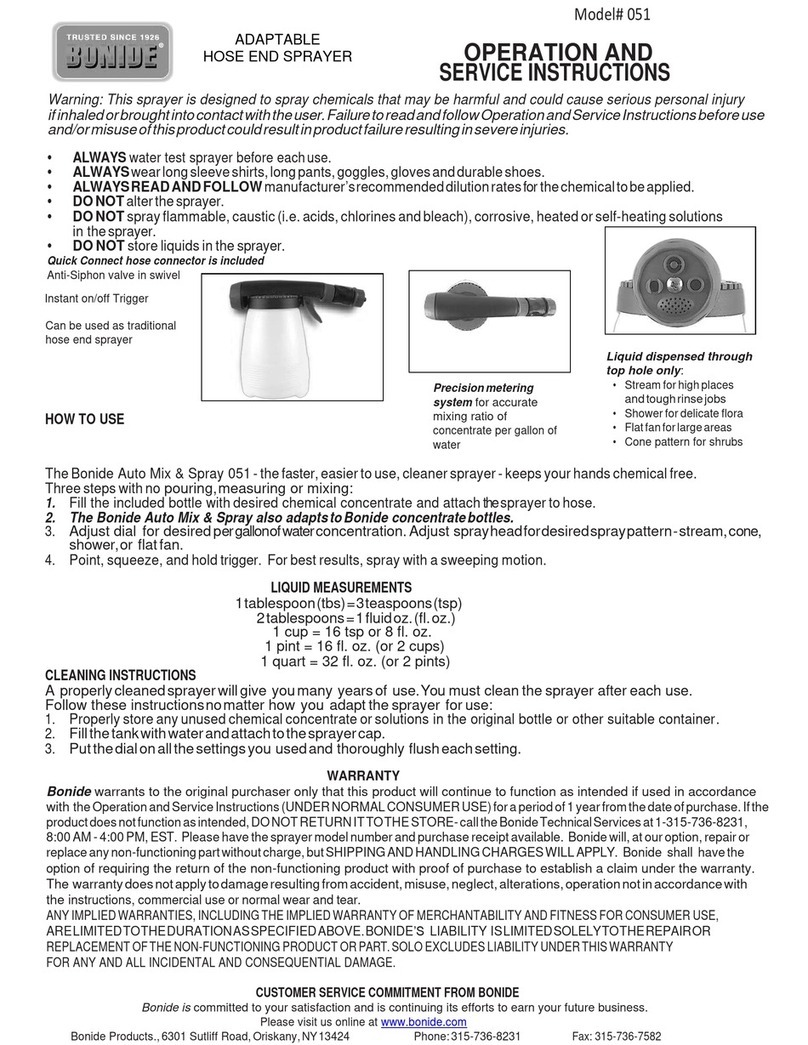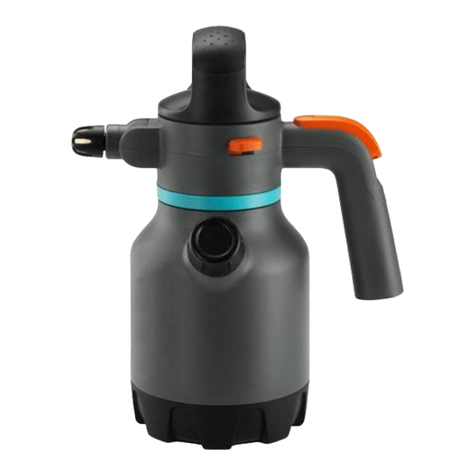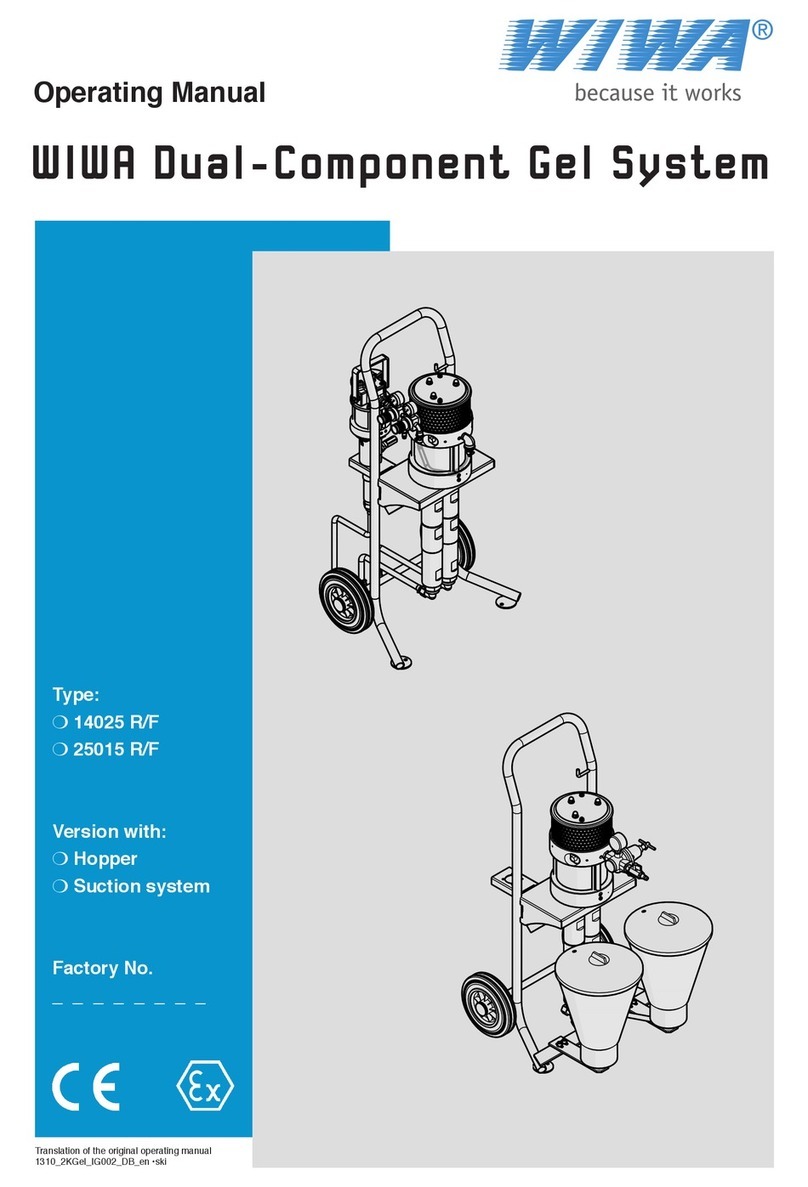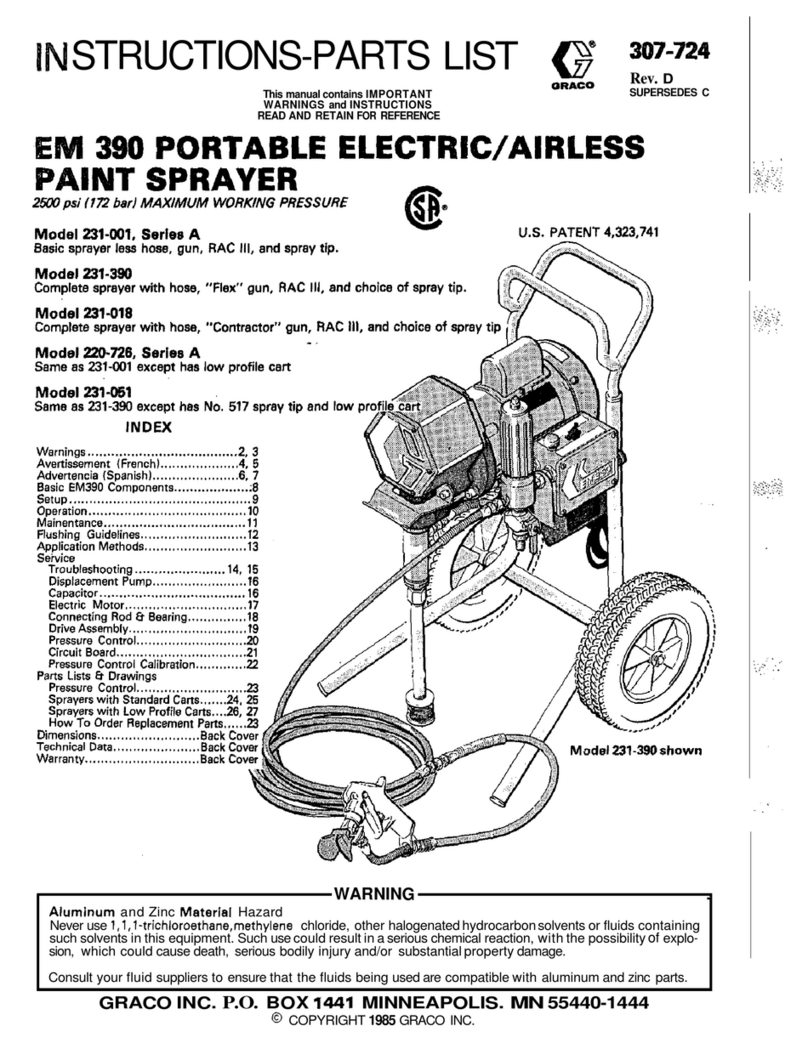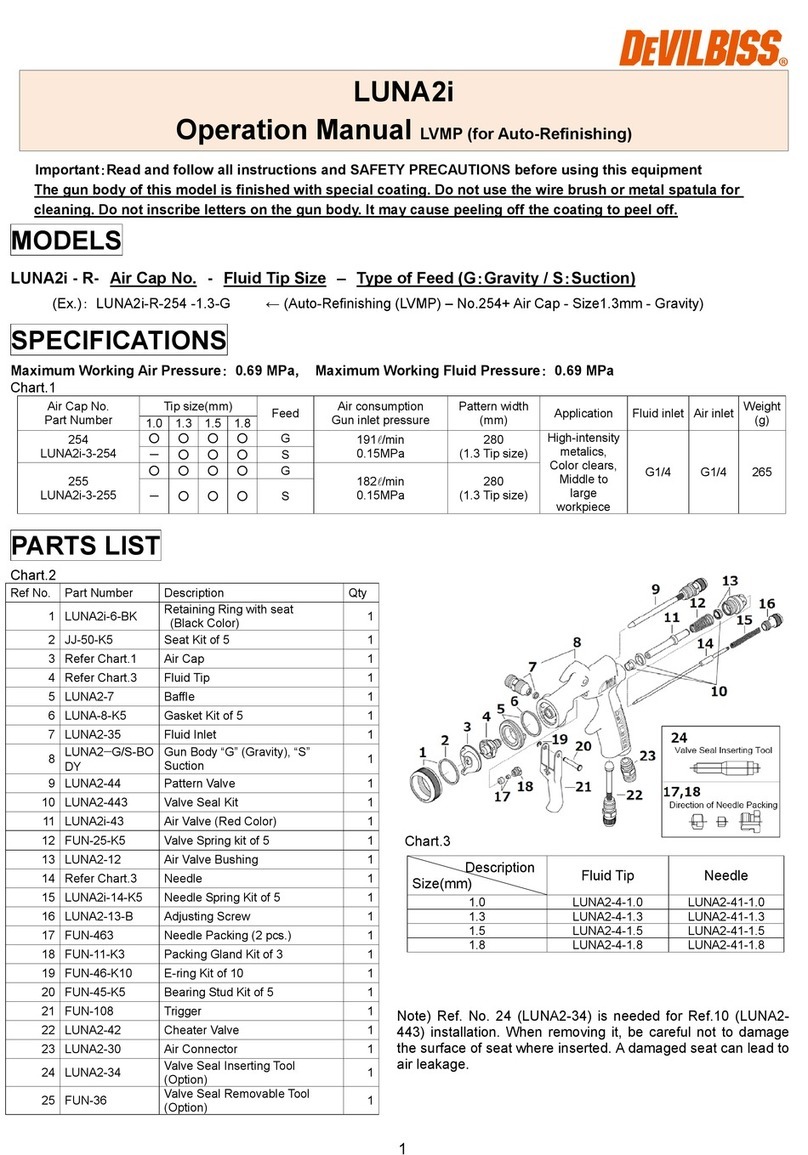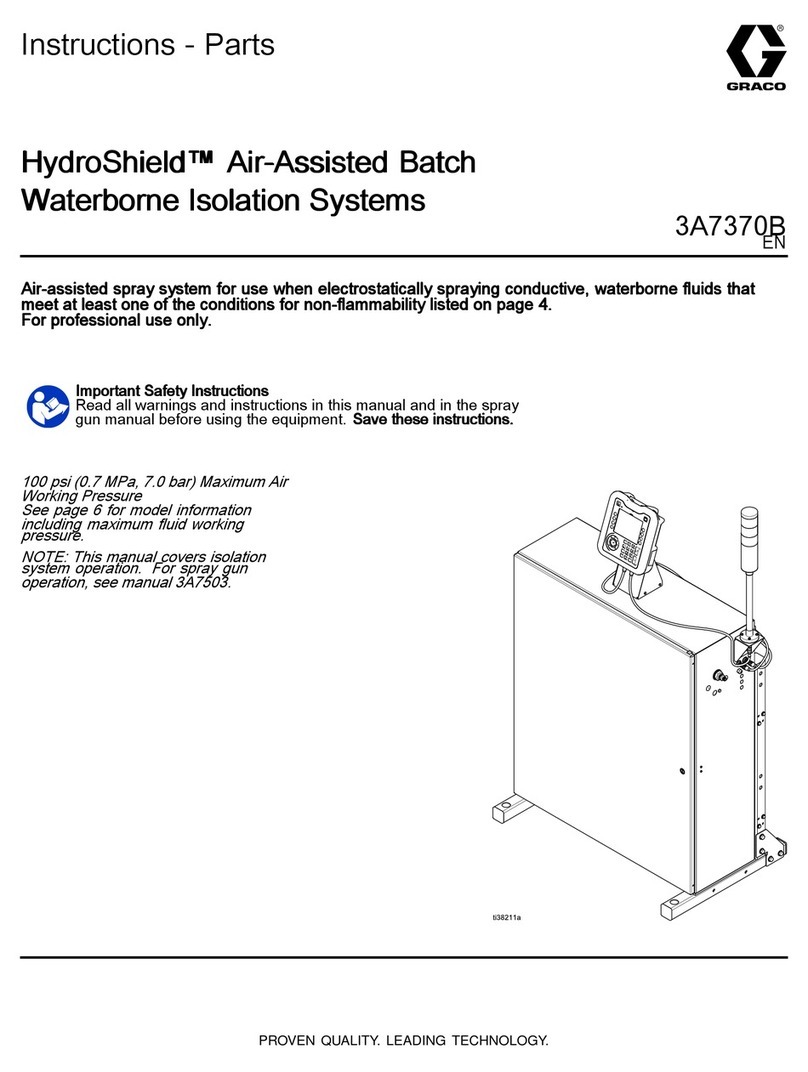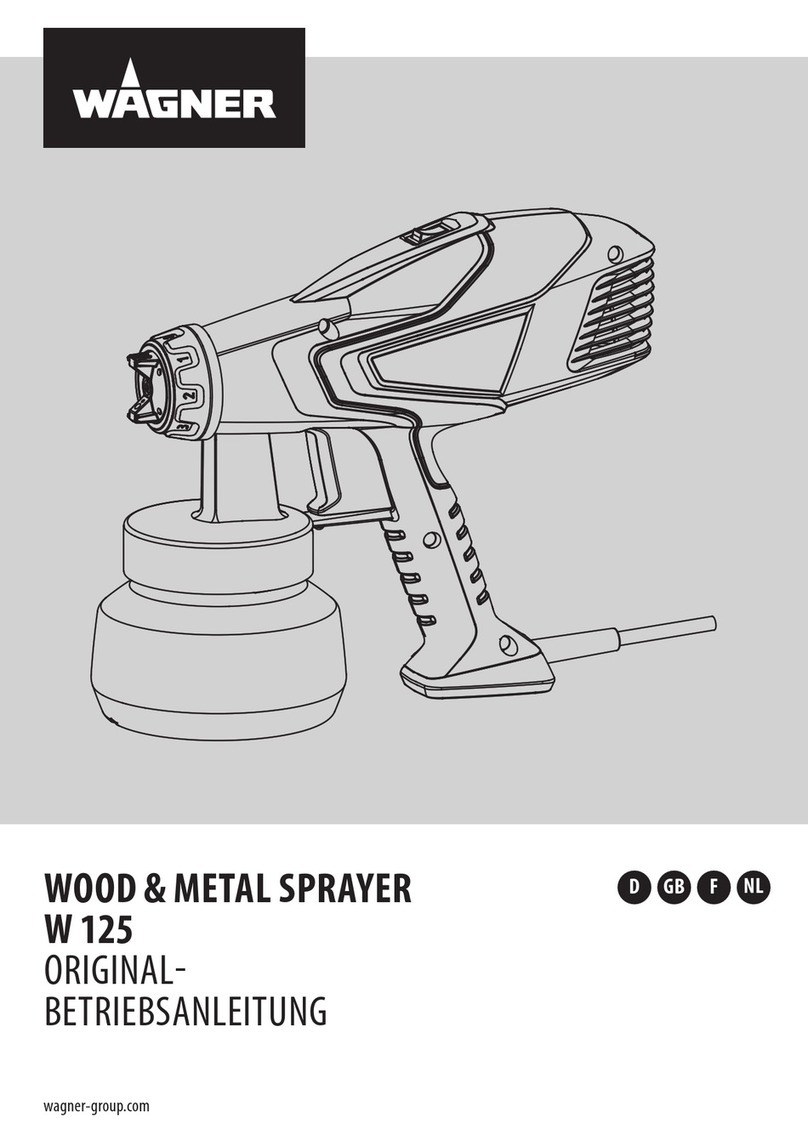
6. TROUBLESHOOTING
7. PARTS LIST
Dried material in a dirty side port restricts passage of air.
Greater flow of air from the cleaner side port forces a fan
pattern in the direction of the clogged side.
Dried material around the outside of the fluid nozzle tip restricts
the passage of atomizing air at one point through the centre
opening of the air nozzle and results in the pattern shown. This
pattern can also be caused by a loose air nozzle.
A split spray or one that is heavy on each end of a fan pattern
and weak in the middle is usually caused by too high an
atomization air pressure or by attempting to get too wide a
spray with thin material.
1. Dried out packing around the material needle valve permits
air to get into the fluid passageway. This results in spitting.
2. Dirt between the fluid nozzle seat and body or loosely in
stalled fluid nozzle will cause the gun to spit.
3. A loose or defective swivel nut on the siphon cup or
material hose can cause spitting.
Material bubbles or “boils” in paint cup. Atomised air flowing through the paint channel to pot.
The paint nozzle is not tight enough. Air nozzle is not completely
screwed in. The air net clogged and the seat is defective or
nozzle insert is damaged.
Tighten, clean or replace parts accordingly.
Dissolve material in the side ports with thinner, then blow the gun clean.
Do not poke into the opening with metal instruments.
Remove the air nozzle and wipe off fluid tip using a rag dampened with
thinner. Tighten the air nozzle
Dried material in a dirty side port restricts passage of air. Greater flow
of air from the cleaner side port forces a fan pattern in the direction of
the clogged side.
1. Unscrew the knurled nut slightly and place two drops of machine oil
on the packing then replace the nut and finger tighten. In extremely
aggravated cases, replace the packing.
2. Remove the fluid nozzle, clean the back of the nozzle and the nozzle
seat in the gun body using a rag dampened with thinner. Replace the
nozzle and secure it tightly against the body.
3. Tighten or replace the swivel nut.
VIEW OF PROBLEM POSSIBLE REASON FOR PROBLEM SOLUTION
ITEM PART NO DESCRIPTION
1 SSG1GX/01 AIR NOZZLE
2 SSG1GX/02 RING
3 SSG1GX/03 AIR CAP
4 SSG1GX/04 FLUID NOZZLE
5 SSG1GX/05 PACING SCREW FOR PAINT NEEDLE
6 SSG1GX/06 TEFLON SEAL
7 SSG1GX/07 WASHER
8 SSG1GX/08 SPRING
9 SSG1GX/09 BRASS RING
10 SSG1GX/10 GASKET
11 SSG1GX/11 CONNECTOR FOR 0.6 CUP
12 SSG1GX/12 GUN BODY
13 SSG1GX/13 SCREW
13C SSG1GX/13C TEFLON SEAL
13D SSG1GX/13D AIR VALVE SEAT
13E SSG1GX/13E P.C SEAL
13F SSG1GX/13F VALVE
13G SSG1GX/13G VALVE
13H SSG1GX/13H SPRING
14 SSG1GX/14 WASHER
14A SSG1GX/14A SPRAY REGULATING SCREW
14B SSG1GX/14B SPRAY REGULATING NUT
14C SSG1GX/14C TEFLON SEAL
14D SSG1GX/14D SPRING
15 SSG1GX/15 CONTROL KNOB
15A SSG1GX/15A COUNTERSUNK SCREW
16 SSG1GX/16 PAINT NEEDLE-COMPLETE
17 SSG1GX/17 SPRING FOR PAINT NEEDLE
18 SSG1GX/18 LOCKOUT FOR FLUID CONTROL KNOB
18A SSG1GX/18A FLUID CONTROL KNOB
23 SSG1GX/23 TRIGGER
24 SSG1GX/24 SCREW
25 SSG1GX/25 PIN
26 SSG1GX/26 AIR CONNECTION PIECE 1/4"
27 SSG1GX/27 MATERIAL SLEEVE
28 SSG1GX/28 PLASTIC CUP
28A SSG1GX/28A ADAPTOR
29 SSG1GX/29 COVER OF 0.6 PLASTIC CLIP
29B SSG1GX/29B NON-DRIP CONTROL DEVICE
30 SSG1GX/30 SPANNER
32 SSG1GX/32 BRUSH
33A SSG1GX/33A AIR PISTON
33B SSG1GX/33B AIR PISTON
33F SSG1GX/33F O-RING
33G SSG1GX/33G NUT
33H SSG1GX/33H SCREW
34H SSG1GX/34/H AIR REGULATOR
A faulty spray is usually cause by improper cleaning or dried material around the fluid nozzle tip or in the air nozzle. Soak these parts in a
solvent that will soften the dried material and remove with a brush or a cloth. Never use metal instruments to clean the air or fluid nozzles.
These parts are carefully machined and any damage to them will cause a faulty spray. If either the air nozzle or fluid nozzle is damaged, the
part must be replaced before a perfect spay can be obtained.
Original Date: 070400
Issue Date: 070400
Version No: 0
Date Modified: N/A
NOTE: It is our policy to continually improve products and as such we reserve the right to alter data, specifications and component parts without prior notice.
IMPORTANT: No liability is accepted for incorrect use of this product.
WARRANTY: Guarantee is 12 months from purchase date, proof of which will be required for any claim.
INFORMATION: For a copy of our latest catalogue and promotions call us on 01284 757525 and leave your full name and address, including postcode.
01284 757500
01284 703534
sales@sealey.co.uk
Sole UK Distributor, Sealey Group,
Kempson Way, Suffolk Business Park,
Bury St. Edmunds, Suffolk,
IP32 7AR
www.sealey.co.uk
Web
email
Original Language Version SSG1/G Issue: 2 - 22/01/10
